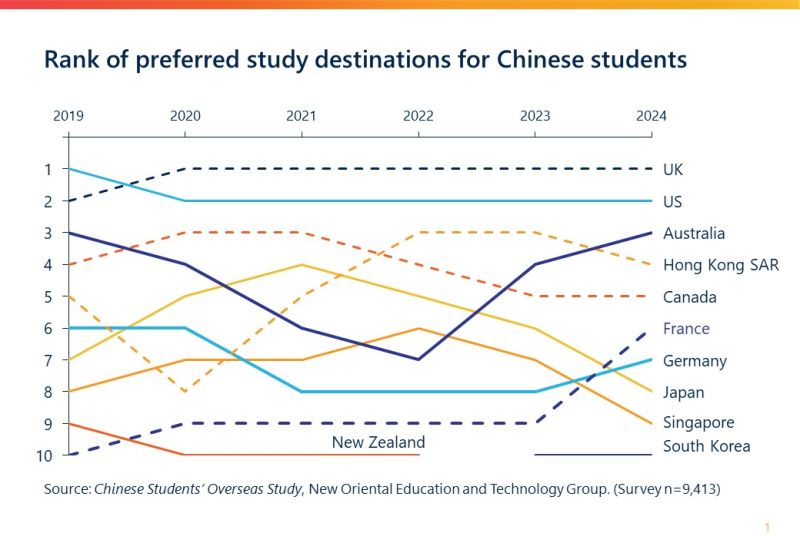The rise in popularity of Asian study destinations such as Hong Kong, Japan and Singapore amongst fellow Asian students, was highlighted as a contributing factor to loss of market share for Western countries that have created restrictive immigration policies.
The session, jointly facilitated by Oxford International Education group and Studyportals, charted the latest trends in international student mobility, with the alternative destinations taking a “bigger piece of the pie” in terms of attracting Chinese students.
“We’re entering what I call the China hangover era,” explained Matt Durnin, principal at international management consultancy Nous, who spoke at the event.
“That’s because China dominated growth in all kinds of study for a really long period of time and to have an economy of that size growing over 10% each year for a decade is not going to be something repeated by any other country,” he continued.
“The growth-pace of China [as a source country for the West] was over well before the pandemic” said Durnin.
The reliance on Chinese students as the major source market has created a false picture of edu-immigration for the big four study destinations, as traditionally Chinese students wanted to return home after graduation.
The growth-pace of China [as a source country for the West] was over well before the pandemic
Matt Durnin, Nous
“The economic development [in China] was so fast that [outbound] student numbers soared but these students didn’t have immigration intentions because the global financial crisis meant that job opportunities and salaries were better [in China] than in the West,” explained Durnin.
That situation has changed now, with inflation putting pressure on global economies, and many families searching for ways to facilitate work overseas after graduation, or reduce the cost of study in the first instance.
As such, Asian countries are now rebalancing from being source markets to establishing themselves as desirable study destinations.
The number of Chinese students applying to the US has been falling consistently for the last seven years, long before the pandemic, with India now surpassing China as the number one source country for the US.
“The data [we are presenting] is showing how some regional study destinations [in Asia] are starting to rise,” continued Durnin.

“Using survey data from New Oriental, one of the largest education agents in China, we can see the opinion of around 10,000 parents of students every year. What’s really interesting is that shift [in demand] away from the US, UK and Canada towards Hong Kong, Japan and Singapore [as alternative study destinations],” Durnin revealed.
“When I speak to institutions in Hong Kong, they are telling me mainland applications are up 400% and enrolments up 200-300%.
“[In the past], Chinese students were not that interested in looking at these regions or there was parental resistance at looking at these regions before the pandemic. This has changed.”
Data from the British Council also highlighted cultural affinity for the different countries as study destinations.
“What we saw was that the older generation [in China] are very, attracted to the West, while the younger generation are much more interested in regional study destinations in terms of culture and study experiences,” said Durnin.
“The pandemic gave students a chance to experiment with some of these local, nearer study destinations, which are also very cost effective.”
This sentiment was also backed-up by data from Studyportals, with CEO Edwin van Rest speaking at the event.
“The decade of Asia is upon us” said van Rest. “You see, Asia has become a destination, rather than only a source market, and this will drive a new competitive landscape,” he added, highlighting online search data for higher education courses based in Asian countries.













